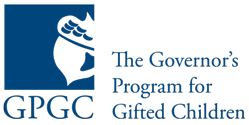Here are some reports from the teachers of each of our Science classes for the first two weeks of the Program. We have organized them by class:
Freshmen Science (Mr. Jimmy Newman, Instructor):
Week One:
The freshmen science students learned about the nature of science by working together and alone to experience inductive and deductive reasoning, the need for motivation to do science, generating data, collecting data, interpreting the data, the importance of communication of this data, and respect for others especially in their findings.
These things were accomplished through the historical studies of Thales, Democritus, Ptolemy, Galileo, and Newton. The students discovered patterns in activities and drew conclusions from these patterns. They were exposed to the wrong conclusions (logical fallacies) just as Ptolemy was. They were tested on the scientific method.
Week Two:
This week was very busy. I got to know the students better and they are wonderful. They had to measure many things showing me they knew how to use the instruments of science. We had rulers, meter sticks, tape measures, thermometers, triple-beam balances, stop watches, protractors, etc. We finished up with the Starlab Planetarium. They looked at constellations, colors and temperature of stars, longitude, latitude, plates, volcanoes, Native American Indian constellations, animal cell, cell reproduction, and how color effects our eyes. Friday we have class competition. Below are some pictures with the students and the Starlab Planetarium.

Students in front of the Starlab.

Students in front of the Starlab.

Inside the Starlab.

Mr. Newman leading the journey through the Starlab.
Sophomore Science (Mr. Bill Guillotte, Instructor)
Week One:
We began our journey through the Scientific Method by preparing ourselves for safety in the lab. We watched a college chemistry lab tutorial and took notes on proper lab safety procedures, proper lab apparel, and steps to take if there is an emergency.
We continued our journey by trying to build a free standing paper tower using only 1 piece of copy paper and scissors(the tallest I have ever seen is 1.05 meters). We discussed different ideas, had many different thoughts, and lots of trials, but the tallest tower was only about 60 cm. The students didn’t realize they were using the steps of the scientific method. We then had a discussion on the steps of the scientific method that we would be using for this class.
The next step in our journey found us using the steps of the scientific method to discover which color M&M occurs most in an individual size bag of M&M’s. Sophomore II found that the green M&M occurs most often, while Sophomore I found that blue occurred the most. Then the students ate their M&M’s. (Science can be delicious)
The next step in our journey was to discover how many drops of water would fit on the heads side of a penny. Students worked through the procedures for a total of 10 trials and recorded their data in a chart. They then used their data chart to create a graph displaying their findings. One group was able to get an average of 25 drops of water to fit on the penny. (Most of our students made an hypothesis of 3-5 drops)
We also used some time this week to transplant our tomato plants and lay the foundation for our “Tomato Plant Growth” project. We will be using plant food for our independent variable in our attempt to find a way to make tomato plants grow taller.
Week Two:
Our journey this week in Science 2 took us into the world of aerodynamics, density, and air pressure. The students hypothesized on how they could create an airplane that could fly farther. They tested their hypothesis and we had some very creative modifications. As it is with science, some worked and some did not.
We used our scientific method to discover the world of density and buoyancy. A regular egg will not float in water because the egg is more dense than the water. We hypothesized different ways to change the density of the water and discovered by adding 35g of salt per Milli-liter of water we could make the egg float.
Lastly this week, we used only air pressure to crush an aluminum can. By heating 50ml of water in the bottom of the can until it boils and then turning the can upside down in a container of ice cold water, we were able to crush the aluminum can by lowering the air pressure inside the can.
Senior Science (Dr. Linda Brannon, Instructor)
Week One:
Week one of Senior Science was a reintroduction for many of the students to some of the basics of research design. With the combination of reviewing the material on the pretest and developing science projects; the two go together well. We discussed elements of the experimental method, including the concepts of independent variable (IV) and dependent variable (DV) and the necessity of control. I led students who have decided on science projects to evaluate if their study was an experiment, and if so, to identify their independent variable. Some students could do so, and others had not analyzed their study well enough to distinguish their general procedure from the specific elements of IV and DV. Working toward making this abstract information concrete and personal is an important step for students in this class, and we will work on it more.
Also during week one the class was split into two sections – one that are doing science projects and one that will do a group project (as they are doing either Humanities or Composition as their senior projects). The group project section spent most of the week talking about the history of science, including how the limits on access to education as well as social attitudes restricted science throughout the 17th, 18th, and 19th centuries. We also explored the impact of the development of science on people’s lives, focusing on the areas of physiology and medicine.
Week Two:
Project students started to turn in project proposals and discuss their suitability for the constraints we have during the summer. Both classes discussed the underlying principles of science and proceeded to cover the various types of descriptive research and then experimental designs. One student conducting a science project is doing a survey, one of the descriptive designs, and several others are conducting experiments. My focus for the first part of the week was to lead the students conducting studies to understand how their studies match the various designs we are discussing. That is, we are trying to integrate the abstract information about science and research designs into the activities they are performing.
We ended the week with our first visit to the rat lab. In contrast to stereotypes, laboratory rats are cute, furry creatures that GPGC students are anxious to hold. So the visit to the rat lab involved some one-on-one rat-giftie contact, with no harm to either.
Three students are working on science projects in the rat lab, and students conducting studies on other topics will have the opportunity to participate in a rat study. Love those rats!











